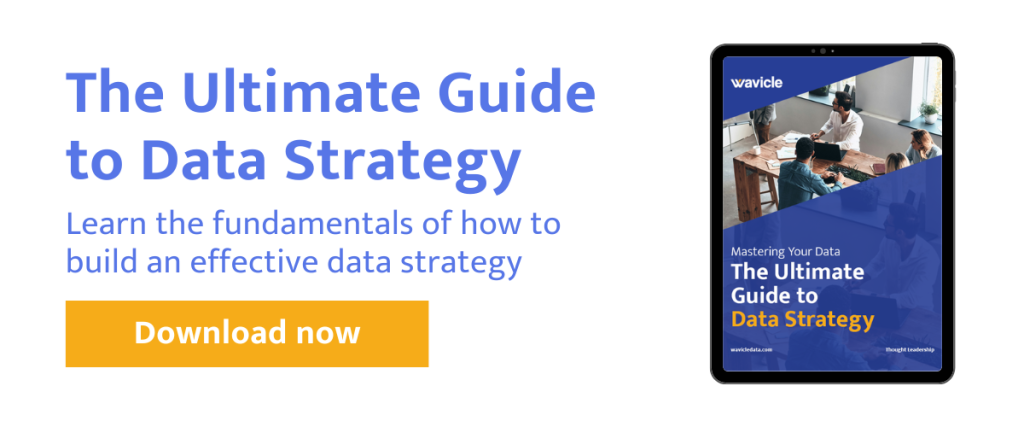Data strategy is the foundation of how a business collects, stores, and uses data. Whether the company is seeking to streamline their internal systems for greater efficiency and cost-effectiveness or to enable high-level analytics and AI capabilities, the success of every data and analytics project rests on the company’s data strategy.
One widely adopted method to devising a data strategy is the traditional approach, which emphasizes a comprehensive high-level strategy encompassing people, processes, and technology. This approach delivers a forward-looking, value-driven future state and roadmap, incorporating essential elements such as assessment, use cases, and a vision for the future.
Although a traditional data strategy project doesn’t involve hands-on implementation, it lays a solid foundation for data, business intelligence, and advanced analytics within an organization. However, it often requires a significant overhaul of processes and technology and demands robust change management.
Let’s dig deeper into the details of what a traditional data strategy project looks like and when it’s the right choice for your organization.
What to expect from a traditional data strategy project
The journey begins with an assessment of the current state of your organization’s data ecosystem and thorough evaluations to understand how your company’s data can be used to help reach your organizational initiatives. Business interviews across many departments help unravel key needs and objectives, which can be used to shape a strategy that aligns with organizational goals. In addition, technical interviews delve into the current landscape and future data needs, providing the necessary foundation for a robust data strategy.
As the process progresses, it is important to identify practical use cases for how data and analytics can effectively address specific business challenges. Simultaneously, technical experts develop data and analytics architecture to align with core systems and objectives. Together, these pieces lay out the technical future for your data ecosystem.
Concurrently, a forward-looking plan for people and process must be addressed. A technical architecture cannot be effective if it does not align with the processes users follow when interacting with data and tools. Together, these pieces lay the groundwork for a cohesive integration of data strategy within the organization.
Finally, the traditional data strategy journey concludes with the creation of a comprehensive roadmap, detailing the steps your team must follow to achieve the desired end state. This is the last piece of the puzzle that identifies every part of the transformation your organization must undertake to be able to fuel your high-priority data and analytics needs.
At the end of this meticulous process, your team has deep insight into the current state of your data ecosystems, the analytics and AI use cases that can make the biggest impact on your business, and the future technical and organizational landscape that will allow you to create that impact.
When the traditional approach is the right approach
While almost every company can benefit from a traditional data strategy, not every company is going to start with one. Businesses that need to see immediate ROI might be better suited to an accelerated or AI-led approach instead. However, those that can invest time and effort to develop a holistic data ecosystem will always benefit in the long run by eliminating old technical debt, increasing trust in their data, and setting up an ecosystem that is ready for all of their analytics and AI needs – not just one or a handful of applications.
The traditional approach is well-suited for large and complex organizations that can prioritize a premium, holistic, one-time solution. This method is ideal for companies that prioritize comprehensive organizational change, and it is typically followed by a longer implementation project to bring the envisioned data strategy to fruition and start enabling high-priority analytics and AI use cases that drive tangible business results.

The next steps in your data strategy journey
The traditional approach to data strategy provides a comprehensive roadmap for organizations seeking to transform their data and analytics ecosystem. It offers a strategic, thorough method to unlock the full potential of data and analytics within your organization.
To learn more about data strategy and the different ways you can tackle a data strategy project, download Mastering Your Data: The Ultimate Guide to Data Strategy today or get in contact with Wavicle’s experts to see how we can help.


